I recently parted with my Hooper Bay kayak, the only remaining relic of my first efforts as a boatbuilder 40 years ago. It was my second kayak, the first being one I designed after poring over my father’s copy of Adney and Chapelle’s The Bark Canoes and Skin Boats of North America. That kayak was an awkward platypus of elements I’d seen in the book and turned out to be a bland dilution of whatever qualities the original kayaks might have possessed.
That kayak got me afloat, but I gained a new appreciation for the traditional forms I’d appropriated for it when I met David Zimmerly in 1978 at Port Townsend’s Wooden Boat Festival. He gave a talk there on the Hooper Bay kayak, which I recognized as the same style as the Nunivak Island kayak included in Skin Boats.
Nunivak is about 75 miles due south of Hooper Bay, and both are inhabited by the Yupik people of Alaska’s west coast. I was taken in by David’s detailed description of the Hooper Bay and the work of Yupik master kayak builder Dick Bunyan. David kindled my interest by giving me a photocopy of his draft of his then yet-to-be-published book, Hooper Bay Kayak Construction.
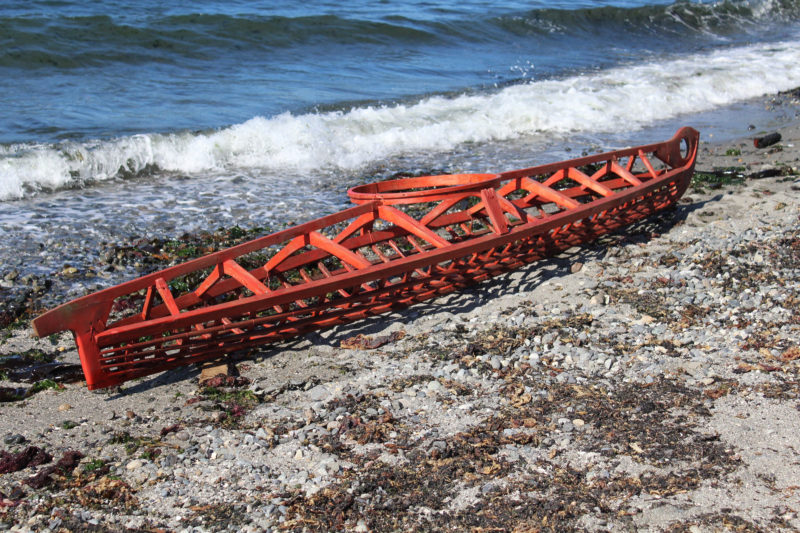
The Hooper Bay design was thoroughly and beautifully documented in David Zimmerly’s book, “Hooper Bay Kayak Construction.” The book is out of print now, but there are some old copies available from online used-book outlets.
It included detailed drawings of every piece, photographs of every step of the process from collecting driftwood to paddling the finished kayak. All that fall after the festival, I gathered driftwood, something I’d been doing since I was a youngster, helping my dad collect red cedar for fencing our yard. The beaches near home also had a bit of Alaska yellow cedar—straight stock for steam-bent frames and the coaming hoops; crooks for deckbeams the curved lower stempiece.
I learned a lot building the Hooper Bay: cutting straight and hooked scarf joints, half-lap joints, and mortises and tenons on compound bevels; working with crooks, carving stempieces, and steam-bending frames and coamings. Aside from the practical experience, I gained a better understanding of the sophistication of traditional designs and the centuries of experience and knowledge that went into them.
The Hooper Bay was meant for hunting seals in the Arctic and occasionally for ferrying people short distances across protected water, with as many as six aboard: two back-to-back in the cockpit, one on each deck, and one inside each end. It was only 15’ long, quite short compared to a modern touring kayak, but with a beam of 30”, a depth of 18” and weighing over 70 lbs, it was a big vessel. As deep as it was, the coaming came up to my armpits. I made a single-blade paddle of the type used for the Hooper Bay and paddled it like a canoe, alternating sides. It made for a slow, meandering course, so I never traveled far.

When it still had its canvas skin and was seaworthy, the Hooper Bay was a restful place to lie in with its decks for a cathedral ceiling and its cockpit opening for a skylight.
On summer days I would paddle a mile offshore, stow the paddle inside, and slide into the kayak and let the afternoon’s land breeze carry me back to the beach. Sometimes I’d take a book and read. Twice I took a cassette recorder and made spoken letters for my great aunt in Boston. She was in her 90s and nearly blind, and the sound of the water gurgling against the canvas hull took her back to her childhood, canoeing at summer camp. Most of the time I’d lie on my back looking up through the cockpit at the circle of sky rimmed by the coaming, listening to that same sound. When a cool northwesterly was blowing, the air inside the Hooper Bay was still and warm, and redolent with cedar and linseed oil. The rocking of the hull would hold me cradled between wakefulness and sleep.
Over the following decades, I continued to build reproductions of Arctic kayaks. I was drawn to the sleeker and faster Greenland types, learned how to roll them a dozen different ways, and enjoyed paddling them in storms with water washing thick across the decks the deafening roar of the wind in my ears. The Hooper Bay sat under the eaves of my parents’ house for years, dusted green with the pollen of the cedar trees. When I had a house of my own, I kept the Hooper Bay alongside the garage. The canvas covering grew speckled with mildew, and the paint cracked. Eventually I removed the skin, leaving the lashed latticework frame bare.
An artist friend liked the frame and offered to keep it in her studio. The cedar had weathered and turned gray, so before taking it to her I brushed it with linseed oil mixed with vermilion pigment.
The frame stayed suspended above a belt sander and an electric kiln for quite a long time—through a dark decade of divorce, from a time when I kissed my young children goodnight to times when they were grown and I’d go to bed in an empty house; through the death of my mother and chill sea of long-forgotten deadlines and appointments.
I brought the Hooper Bay home when my friend moved out of town, and it lay hidden alongside the house under a black tarp. With the coming of each spring, bracken ferns pierced between its ribs and morning glory spiraled around its chines. I often thought about giving the Hooper Bay a new skin, to paddle away from shore, lie down in the cocoon of wood and canvas, and let the waves rock me into that peaceful half sleep of 40 years ago.
Two summers ago, I took some pictures of the frame set in front of an ivy-covered fence—the vermilion was vibrant against the dark green shingled leaves. I had planned to post the photos with a for-sale ad on Craigslist, but I let month after month slip by. I let the kayak’s color fade. I posted the ad a couple of weeks ago and I got just one response. A few days later the Craigslist buyer arrived and we strapped the Hooper Bay on his roof rack. The frame is gone now, but the best of that kayak remains with me.![]()
Afterword:
Photographs from launch day, summer 1980

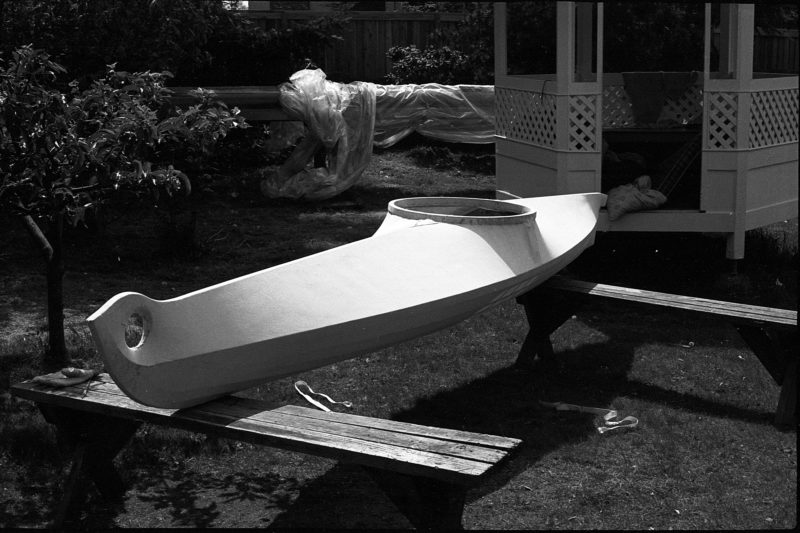
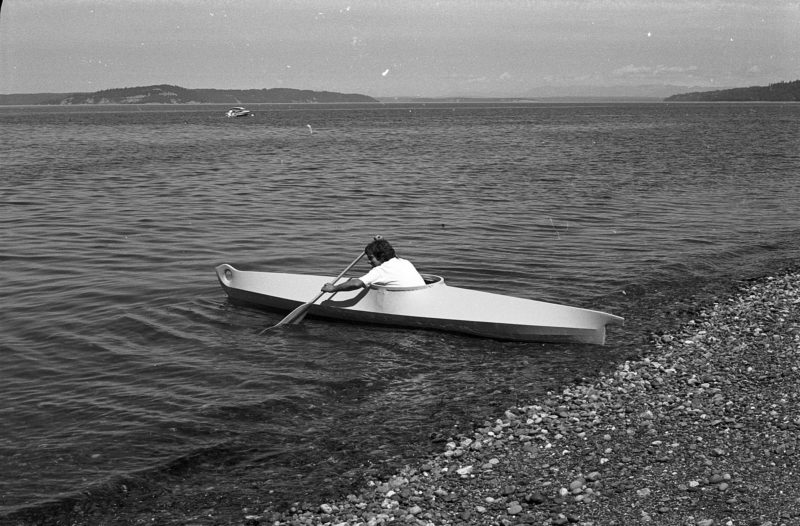
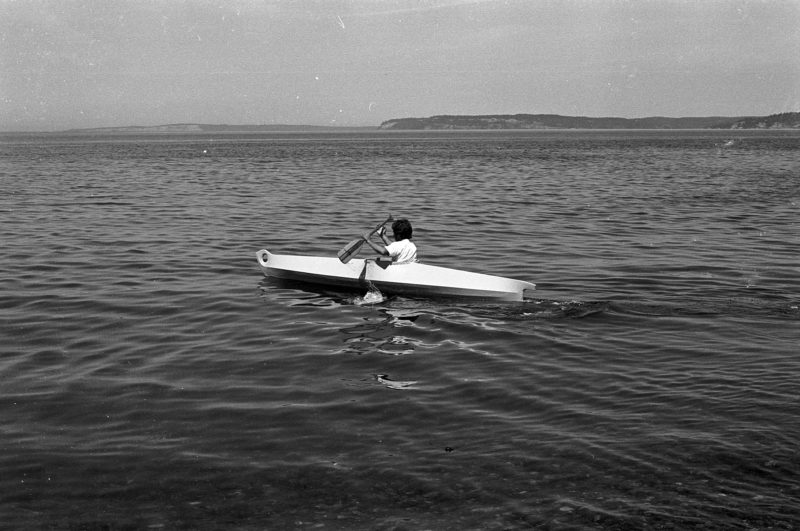
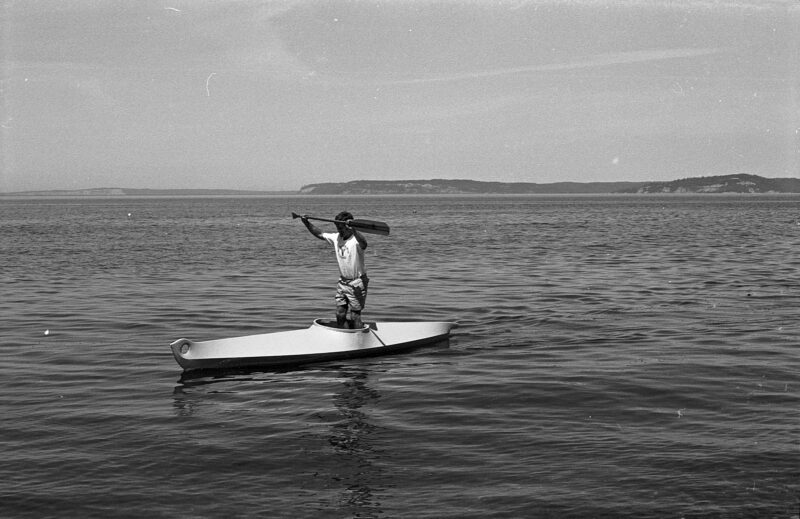
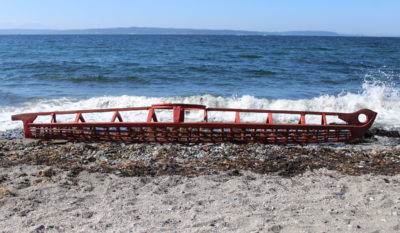
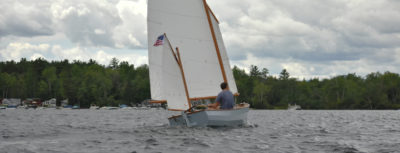

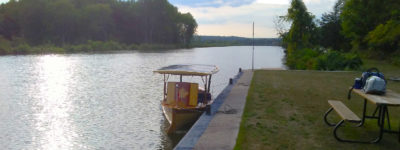
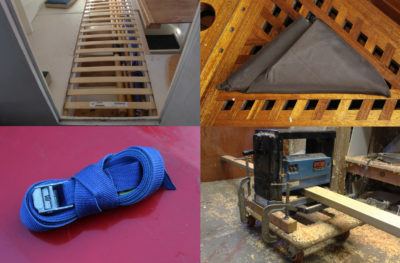
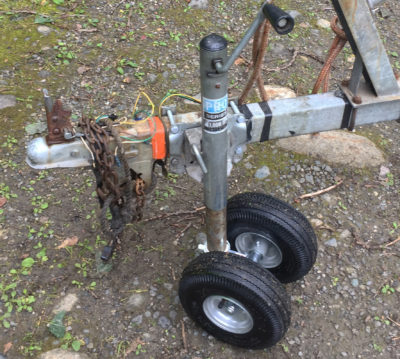
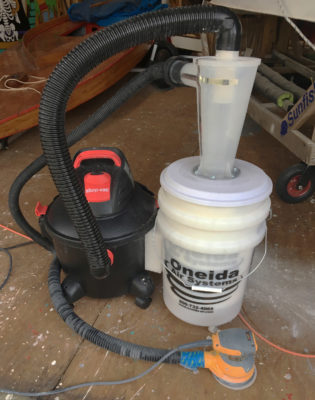
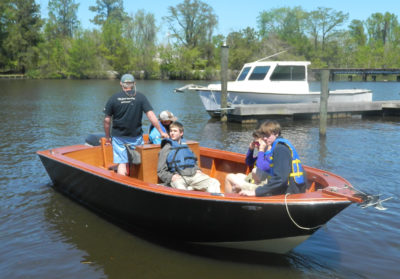
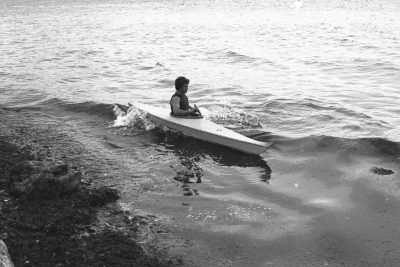

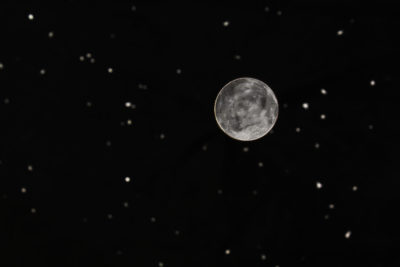
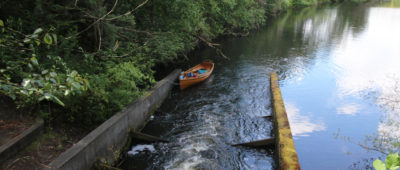
Though I never met David Zimmerly, I used to enjoy his articles in Sea Kayaker. In one, he described several paddles, including one that I believe was a McKenzie River style. He said it should make a good recreational paddle, so I built one on the same proportions. I have since evolved the construction through several iterations, gradually making them shorter, and including a hollow shaft in the last three or four. I like this paddle well enough that I long ago abandoned that never-ending quest to find the perfect paddle. It isn’t bothered by wind, is symmetrical end to end, and has a powerful dynamic lift in sculling mode.
This is the most beautiful and evocative article ever.
Thank you
Thank you. Well said, our friend.